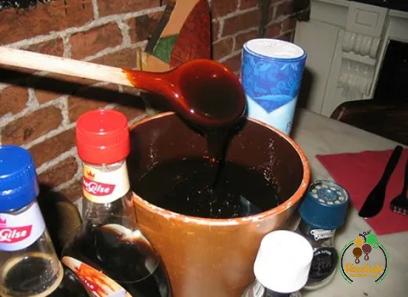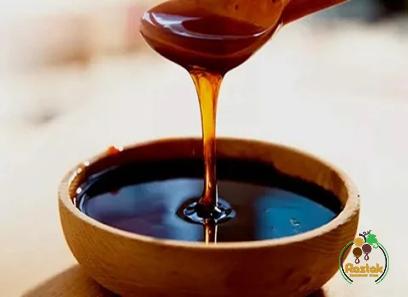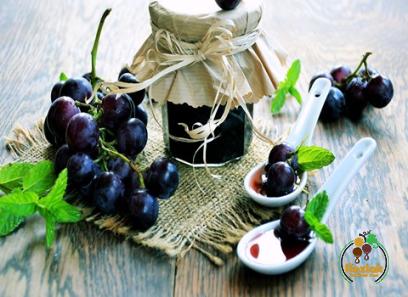There are different types of grapes that we can choose the best grape based on its price and type, for example, the Japanese type of grape is more expensive than other types of grapes.
Ruby Roman, a variety grown in Japan, is about four times larger than the average cultivar. But the price is also high – recently netizens were shocked to find that a package of Ruby Roman can be sold for $450 or more than 33,000 rupees.
According to Business Insider, if the color of the fruit matches the approved color palette, a bouquet can sell for $90 to $450. However, it’s not just the size and price range that make this variety so popular.
Each cluster of unique Romano grapes is carefully inspected before being certified. The clusters are chosen for their unusual size, uniform color and flavor.
Hiroshi Isu, a senior researcher at Ishikawa State University in Japan, told Business Insider that there is no other species in the world as large and red as the ruby roman, which is why the fruit is so prized.

According to this report, the grapes are divided into three categories: premium grapes, excellent special grapes, and premium grapes. Sakurai said that while a typical Roman ruby grape weighs about 20 grams, premium grapes are expected to exceed 30 grams. Only one or two packages can be considered premium.
Although the grape is divided into three categories, all Roman ruby varieties have a unique sweet taste. According to the report, growers intend to sell a bunch of premium grapes for more than $1,000.
Although two grapes were listed this year, none were classified as premium, the report . However, a bunch of Roman rubies were auctioned for $12,000.
The price of grapes has caused many reactions on the Internet. While many are shocked, others are curious about the taste of this grape.
The price of grapes has increased. In 2019, a kilogram of grapes was sold for $19.60 and in 2018 for $19.83. The export price reached 21.12 dollars per kilogram with a change of 6.526%.
The best figures for export of Japanese grapes per kilo were obtained for export to Oman, United Arab Emirates (UAE), Russia, Macao and Malaysia. Japanese grape exports are divided into the following categories:
Raisins
fresh grapes
 Prices have changed for grape growers in Japan’s major wine regions. A kilo of grapes in Japan costs about $14.68 in Tokyo and Yokohama, packed and ready for export. The price in yen is 0.1360836.
Prices have changed for grape growers in Japan’s major wine regions. A kilo of grapes in Japan costs about $14.68 in Tokyo and Yokohama, packed and ready for export. The price in yen is 0.1360836.
The price of grapes in Japan per ton during the years shown was $18,674.80, $19,601.04, $19,830.66, and $21,122.57, respectively.
In 2022, the approximate price range for Japanese grapes will be $21.12 to $19.83 per kilogram, or $9.58 to $8.99 per pound (lb). The price in yen is 2278.59 yen per kilogram. The average price per ton in Yokohama and Tokyo is $21,122.57. The import price of grapes to Japan was 3.02 US dollars per kilogram.
Japanese grapes
You might be surprised to know that the Japanese grape variety is one of the largest producers of grapes, supplying most of Asia.
Grape exports continue to grow. Recently, it overtook apple and became Japan’s second export fruit after mandarin. Japan has been able to use its technology and climate to produce varieties that are popular around the world.

Unlike in the United States, Japanese grapes are not eaten as a snack. In Japanese culture, fruit is considered a luxury item and is often given as a gift. Since ancient times, fruits have been a common gift in Shinto and Buddhism, which is popular among the Japanese.
Fruit vendors are reminiscent of jewelry stores, where fruits are beautifully displayed in showcases with alarm clocks.
Japanese farmers take their grapes seriously. They use advanced agricultural science to breed rare and unique varieties. Here are some of the most popular grape varieties grown in Japan.
Ruby Roman grape
If you’ve got some serious cash, go for Ruby Ruby Grapes, which can cost you thousands of dollars, but are worth every penny.
Ruby Romans is a plump, bright red grape that only grows in Ishikawa Prefecture. In 1995, local grape growers and the Ishikawa Agricultural Research Center collaborated to create a new variety to compete with the more popular black and green varieties.
The first grape variety took place in 2008, and according to the results of public voting, it was named Ruby Rome.
Peony

The pine grape variety was first developed in Shizuoka Prefecture in 1957. Made from the Kiyoho grape, it has become the third most popular grape in Japan. This is a large seedless grape with purple skin and a very sweet taste. Some compare its taste to Welsh grape juice.
The dark purple skin of the grape is thick and smooth. If you see a blue layer on the grapes, don’t worry. It is a natural protective layer that prevents disease and moisture loss. Inside, the flesh is translucent pale green, elastic and gelatinous.
KyotoThe Kiyoho grape is a popular black grape variety that is considered an art with strict rules. The bundles are cut so that there are no more than 35 equally spaced bundles. If it is more, the grapes will be less sweet. They produce large seeds and juicy flesh with high sugar content and moderate acidity.
It is one of the oldest local grape varieties. The Kyoho grape was first developed in the 1930s as a cross between Ishiharawase and Centennial. Today, Kiyoho grapes are mainly grown in Japan’s Yamanashi and Nagano prefectures and are sold in high-end fruit shops.
Kiyoho grapes are served as dessert and eaten peeled. The skin has a bitter taste that doesn’t pair well with the sweet pulp, giving the phrase “essential inside”.
4. United States of America

You may be wondering how a type of grape called Delaware arrived in Japan. First, the grape is named after the town of Delaware, Ohio, where it was first grown, not the state. These seeds were brought to Japan through international trade and took root in Japan.
The Delaware grape was the most popular grape in Japan until the early 21st century, when it was replaced by the Kiyoho grape. And he is still very popular. Because they grow more abundantly than other Japanese grape varieties, they are affordable for Japan’s lower and middle classes.
They are regularly given to friends and relatives and consumed as a sweet table grape. The size of these red grapes is small to medium. They grow in dense, clustered oval clusters.
The skin is thin, delicate and delicate. It is one of the types with slippery skin where the skin is easily separated from the pulp. They range from green to pale purple-red and sometimes almost pink.
The glow of Muscat
Muscat Chein grape is fast becoming one of the most popular table varieties in Japan. It is one of the few elite grape varieties that is seedless and can be eaten with its skin and pomace. Its skin is slightly sour, which contrasts wonderfully with its very sweet flesh.
While other grapes in Japan require peeling, the thin, edible skin of Cheyenne is a favorite among grape lovers from children to the elderly. Although they have a thin skin, they do not wrinkle and remain fresh for a long time, which makes them popular among farmers.











Your comment submitted.